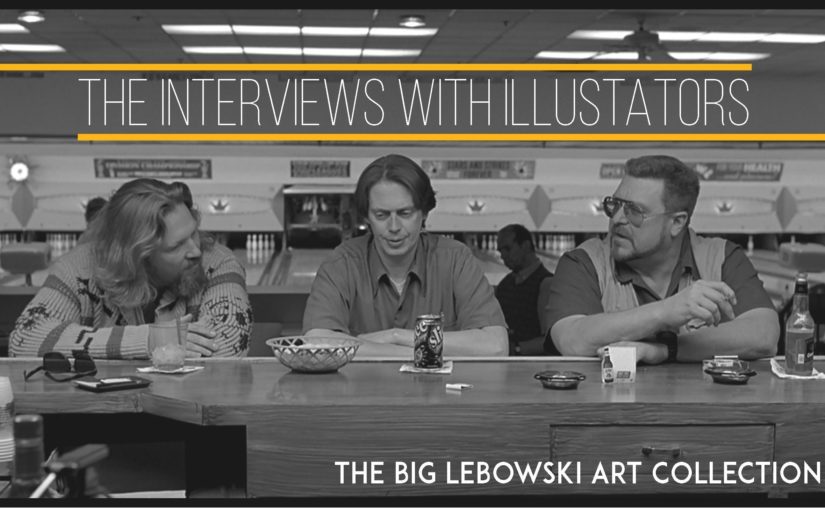The interviews with the artists who collaborated in the creation of the book “The Big Lebowski Art Collection” continues. Today we present Pete Majarich, from USA. If you want to read previous interviews or buy the book, just clickHERE.
Enjoy the reading!
 Pete Majarich is a designer and film fan based in Sydney, Australia.
Pete Majarich is a designer and film fan based in Sydney, Australia.
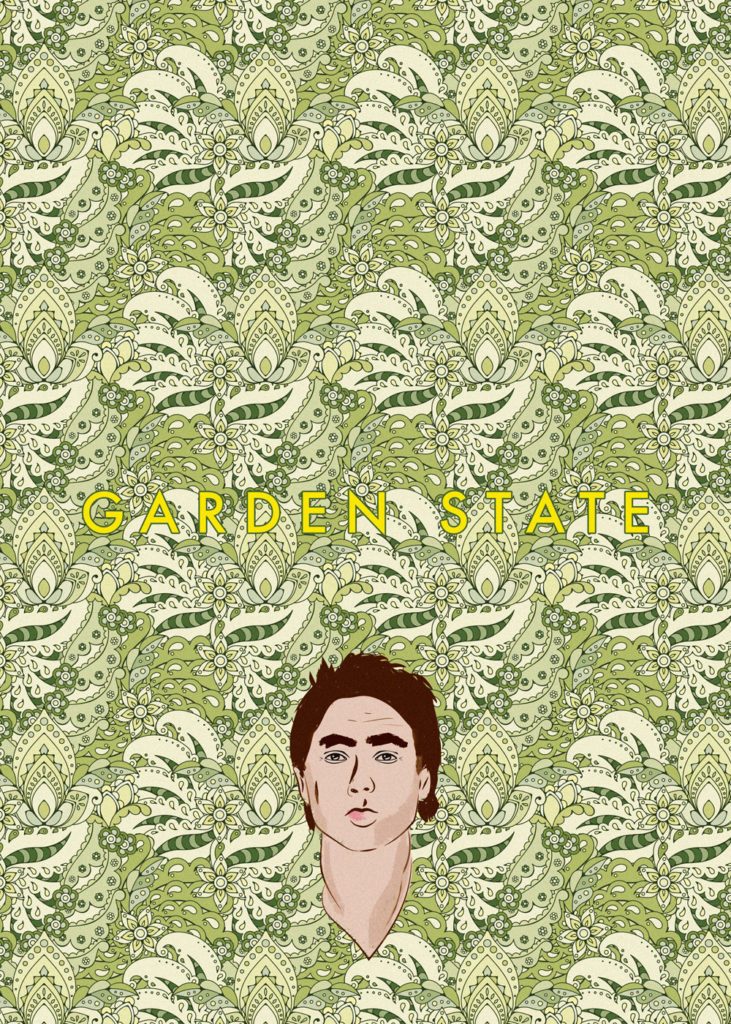
1 – Describe how it was the first time you saw the movie “The Great Lebowski”
PM – I think I first saw The Big Lebowski when I was about 18. I had no about film or story, nor did I have any idea what it was about, so I was very confused. With repeat viewings as I got older, I discovered its magic. So quotable! My favourite scene has to be when they’re scattering the ashes. I think we can all take a lesson from The Dude.
2 – To give readers an idea of your art try to describe what are some of your cultural references. At least 3 sources of inspiration that are important to you and why
PM – I steal inspiration from everywhere. As long as you remix your influences you can always make them into something new. I have always thought creativity is about making connections. I don’t mean in a lame “let’s all connect on linkedin way”. But rather in the sense that the best ideas connect the dots between disparate things in a way that nobody had ever thought of before, but were there all along.
My favourite sources of inspiration at the moment (as at 6:24 am on Tuesday morning, 4th July 2017) are vintage 1970’s nike print ads (Love that bold Futura!), Peter Gabriel film clips from the eighties (they seem a bit dated now, but they used some of the most innovative vfx techniques of the time), and random Wikipedia articles. Like for example, the following tale, which should be made into a movie, stat:
In the winter of 1916-1917, the Eastern Front stretched for more than a thousand miles from the Baltic Sea in the north to the Black Sea in the south. During that winter, half-starved Russian wolves converged on both the German and Russian lines in the northern part of the front in the Vilnius-Minsk region. As their desperation increased beyond their fear of humans, the wolves started attacking individuals but were soon attacking groups of soldiers so viciously and often that something had to be done. The soldiers tried poisoning them, shooting them with their rifles and machine guns and even using grenades against them, but the large and powerful Russian wolves were so hungry, fresh wolf packs simply replaced those that were killed.
The situation grew so severe that the Russian and German soldiers convinced their commanders to allow temporary truce negotiations to enable them to deal with the animals more effectively. Once the terms were worked out, the fighting stopped and the two sides discussed how to resolve the situation. Finally, a coordinated effort was made and gradually the packs were rounded up. Hundreds of wolves were killed during the process while the rest scattered, leaving the area once and for all to the humans. The problem was solved, the truce was called off and the soldiers got back to killing each other properly.
3 – Describe what is your environment where you live and where you work
PM – I live in Sydney. It’s one of the most beautiful cities in the world, but is also very expensive. I hope that creativity and the arts don’t get priced out. I’ve also lived and worked in Colorado, and have probably only seen 0.000001% of the planet’s great sights I’d like to clock before I croak.
4 – Indicate which of 2 of the artists you attend regularly and what you think are the most you can find today in your creative environment
PM – Simon Stålenhag is one of the most imaginative artists I’ve ever seen. He creates matte paintings that have come from a sci fi world full of broken down mechanical monsters littered around eerie, atmospheric landscapes. Every one of his pieces is begging to be turned into a movie or short story.
Even if you’re not a screenwriter, David Mamet and his dialog are a masterclass in economy and impact for any artist. He manages to create concise messaging in the most precise, entertaining way possible, like a tiny dart to the neck but in a good way.
In terms of directors, Saman Kesh kills it on the film scene and has always had a strong graphic influence in his output. His breadth of work includes party-crashing spacemen, twerking robot butts, and love stories that span time and space.
5 – Now that we are at the end. Try to explain what is the “Big Lebowski” for you and why do you think it has so much influence the world of graphics and illustration
PM – Pretty much anything the Coen Brothers do on the silver screen is gold. The Big Lebowski is but one example. Lush cinematography. Eminently-quotable dialog. Characters that live and breathe, even on the page. And, Sam Elliot could narrate the painting of a house and give it gravitas. For all those reasons TBL has had the dent on culture that we’re still writing about today.
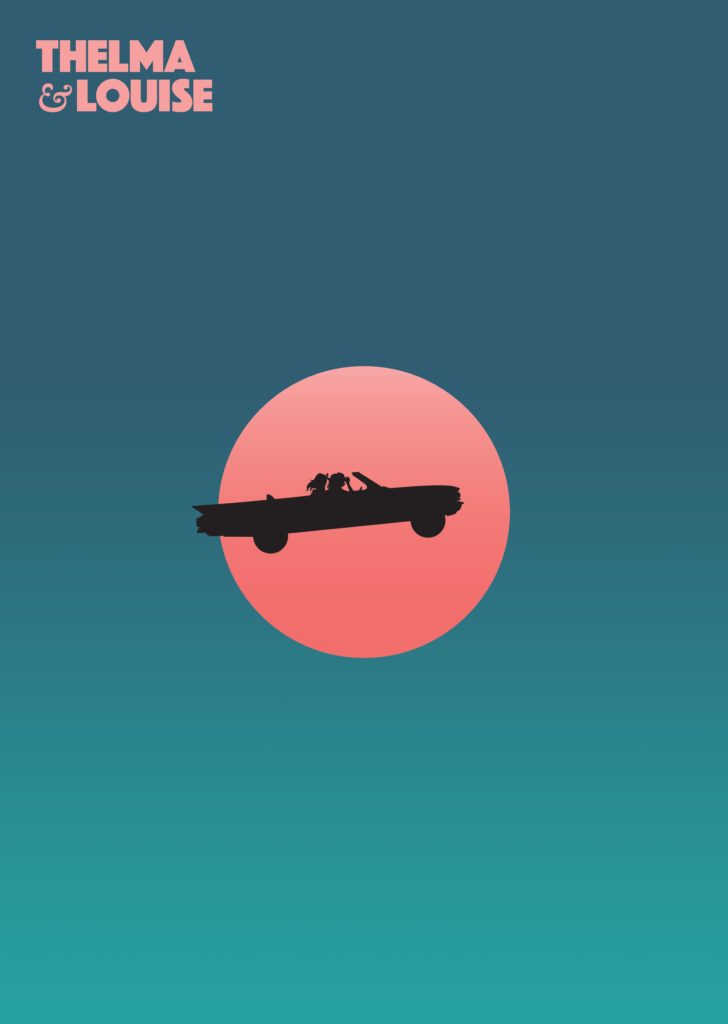
Le interviste con gli artisti che hanno collaborato alla creazione del libro “rtfg” continua. Oggi presentiamo Pete Majarich.
Se volete leggere le precedenti interviste o acquistare il nostro piccolo grande libro, basta cliccareQUI!
Buona lettura!
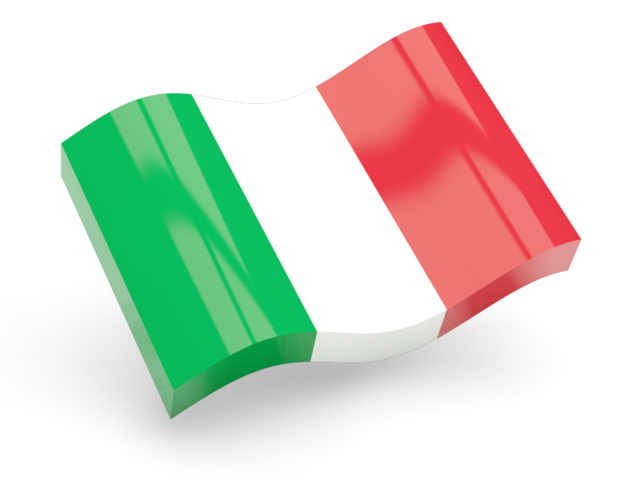 1 – Descrivi come è andata la prima volta che hai visto il film “Il grande Lebowski”..
1 – Descrivi come è andata la prima volta che hai visto il film “Il grande Lebowski”..
MP – Penso di aver visto per la prima volta il Grande Lebowski quando avevo circa 18 anni. Non sapevo niente del film o della storia, non avevo nessuna idea di cosa trattasse, quindi ero molto confuso. Con il tempo, avendolo guardato e riguardato, da più “anziano”, ho scoperto la sua magia. La mia scena preferita è senz’altro quando spargono le ceneri di Donny.
Penso che tutti possiamo imparare qualche lezione dal Drugo..
2 – Per dare ai lettori un’idea della tua arte, prova a descrivere quelli che sono alcuni dei tuoi riferimenti culturali, almeno 3 fonti di ispirazione che sono per te importanti e il perché
MP – Io cerco di rubare ispirazione da ogni parte. Fintanto che riesci a mixare le tue influenze, puoi sempre farle diventare qualcosa di nuovo. Ho sempre pensato che la creatività sta nel creare connessioni. Non intendo dire che tutti dobbiamo essere per forza collegati gli uni agli altri, ma piuttosto che le idee migliori riescono a collegare i punti tra cose lontane, disparate, in modi che nessuno prima aveva mai pensato anche se erano lì da tanto tempo.
Le mie fonti preferite di ispirazione (al momento in cui ti rispondo sono le 6:24 di un martedì mattina del 4 luglio 2017) sono gli advertising a stampa della Nike degli anni Sttanta (Love that bold Futura!), i video degli anni ottanta di Peter Gabriel (oggi sembrano un pò datati, lo so, ma hanno usato alcune delle tecniche più innovative del tempo) e gli articoli che pesco casualmente da Wikipedia. Come ad esempio, la seguente storia, su cui dovrebbe essere fatto un film:
“Nell’inverno del 1916-1917, l’oriente si estendeva per oltre mille miglia dal nord del Mar Baltico fino al Mar Nero a sud. Durante quell’inverno, i feroci lupi russi della steppa convergevano su entrambe le linee tedesche e russe nella parte settentrionale del fronte nella regione di Vilnius-Minsk. Mentre la loro disperazione aumentava oltre la paura, i lupi hanno iniziato ad attaccare i soldati di entrambi gli eserciti così violentemente che doveva essere trovata una soluzione. I soldati hanno perciò prima provato ad avvelenarli, poi li hanno fucilati con le mitragliatrici e poi anche utilizzando le granate, ma i grandi e potenti lupi russi erano così affamati, così violenti che non furono fermati.
La situazione diventò così grave che i soldati russi e tedeschi convinsero i loro comandanti a consentire a dei negoziati temporanei per stabilire una tregua affinché si potessero affrontare nel modo più efficace possibile gli animali. Una volta che i termini della tregua furono stabiliti, i combattimenti si fermarono e le due parti si misero insieme ad un tavolo per discutere di comune accordo come poter risolvere il problema con i lupi grigi della steppa.
Alla fine, grazie ad uno sforzo congiunto dei due eserciti, i branchi furono accerchiati e piano piano uccisi. Centinaia di lupi furono uccisi durante il conflitto, lasciando una volta per tutte liberi gli agli esseri umani.
Il problema fu così stato risolto, la tregua interrotta, e i soldati tornati a uccidere.
3 – Descrivi quello che è il tuo ambiente dove vivi e dove lavori.
MP – Vivo a Sydney. È una delle città più belle al mondo, ma è anche molto costosa. Spero che la creatività e le arti non abbiano mai questo prezzo da pagare. Ho vissuto e lavorato anche in Colorado, e probabilmente ho visto solo il 0,000001% delle bellezze che ci offre il nostro pianeta che mi piacerebbe visitare ancora e ancora.
4 – Indica quali sono 2 degli artisti che segui regolarmente e che pensi siano il massimo che si può trovare oggi nell’ambiente creativo
MP – Simon Stålenhag è uno degli artisti più fantasiosi che abbia mai visto. Crea dipinti opachi provenienti da un mondo di fantasmi pieno di mostri meccanici che si affacciano su paesaggi inquietanti e atmosfere da brivido. Ogni suo pezzo dovrebbe diventare un film o almeno una short story.
Anche se non sono uno sceneggiatore, David Mamet e la sua classe nei dialoghi è un must. Riesce a creare messaggi concisi nel modo più preciso e divertente possibile.
Per quanto riguarda i registi, Saman Kesh è ottimo ha sempre avuto una forte caratterizzazione da un punto di vista grafico nella sua produzione. I suoi lavori comprendono gli ambienti senza tempo e storie d’amore che spaziano nel tempo e nello spazio.
5 – Adesso che siamo alla fine, prova a spiegare cosa rappresenta per te “Il grande Lebowski” e perché pensi che abbia così tanto influenzato il mondo della grafica e dell’illustrazione
MP – Praticamente tutto ciò che i fratelli Coen creanoal cinema è per me oro. Il Grande Lebowski è solo un esempio. Cinematografia lussureggiante. Dialoghi che diventano immediatamente citazioni. Personaggi che potrebbero vivere e respirare anche sulla pagina di un libro. E poi Sam Elliot, lo straniero, che potrebbe parlarti del dipinto di casa e riuscire a dargli vita.
Per tutte queste ragioni, Il Grande lebowski ha avuto l’impatto sulla cultura che ancora oggi ci porta a essere qui a parlarne.
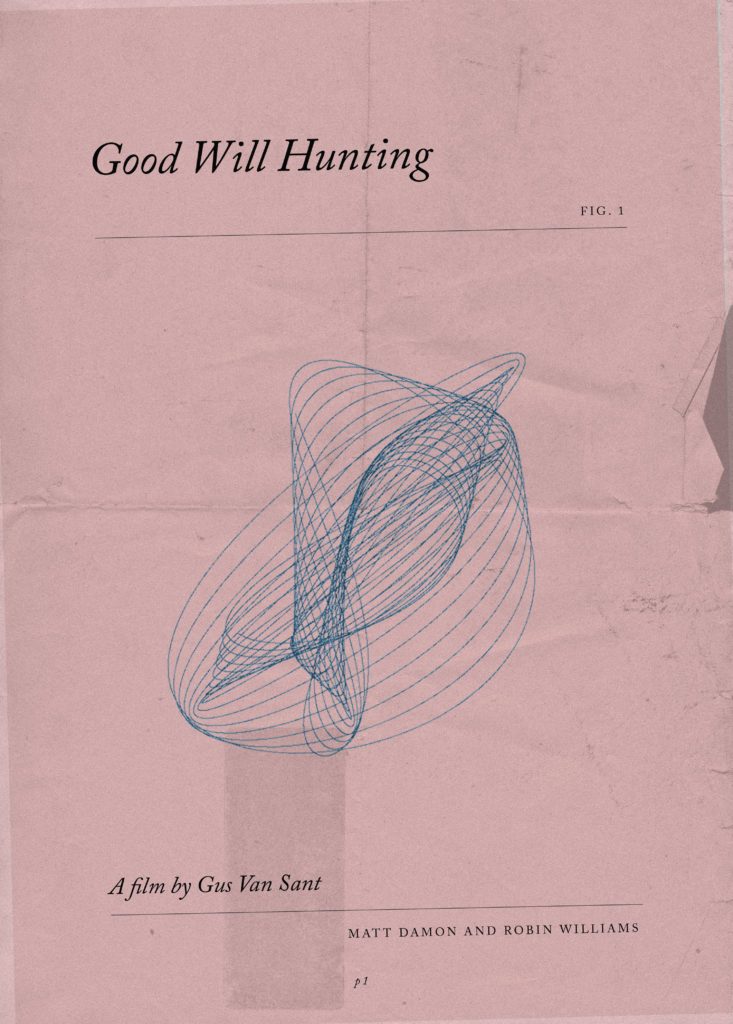
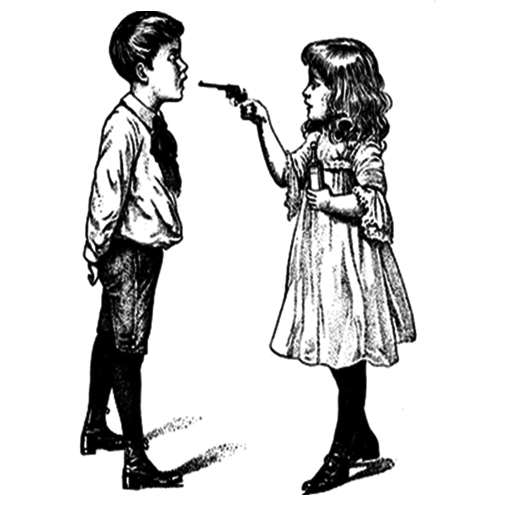
 CENTRO STUDI EDF
CENTRO STUDI EDF  SHOP
SHOP ABOUT
ABOUT 